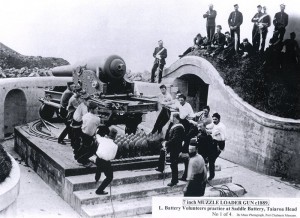360 VIRTUAL TOUR OF FORT TAIAROA AND DISAPPEARING GUN

Did you know that a secret fort lies hidden beneath our world famous Royal Albatross colony?
Explore underground tunnels, learn the fascinating military history and see the world’s only restored 1886 Armstrong Disappearing gun, protecting Ōtepoti from harm. Enjoy the stunning panoramic views of ocean and coastline from the Observation Post and imagine watching for enemy ships to keep Dunedin safe.
Fort Taiaroa, established over 100 years ago to counter the threat of invasion from Tsarist Russia, is hidden beneath the albatross colony. Visitors can explore this fascinating secret fort, learn the military history, from Māori pa to WW2 Fort. View the only Armstrong Disappearing Gun of its type in the world, still in working trim, in its original gun pit. It’s a must do tour to gain a full appreciation of this precious historic and wildlife site – you’ll be engrossed by the interesting stories of life during the military eras.
The Observation Post overlooks part of the albatross colony and the Fort is now a museum.
Stroll through the underground tunnels and view the deep-down magazines. Check out the detailed models which show how the gun worked. Inspect the view from the fully equipped Battery Observation Post with its original (1886) depression range finder.


ARMSTRONG DISAPPEARING GUN
This six inch gun, the first successful breech loader, is mounted on a hydro-pneumatic carriage, which represented the latest in technology in 1886. The gun has worldwide recognition as the only one still in working condition, in its original underground circular gun pit. It was aimed and loaded while below ground, then raised, fired and returned back into the pit by the recoil for reloading. The gun was manufactured by W G Armstrong & Co at Elswick, near Newcastle on Tyne, England, and was tested in its present gun site in June 1889.
TAIAROA HEAD – MILITARY HISTORY
Taiaroa Head (originally known as Pukekura) has served as a natural refuge and defensive position from the earliest human occupation. The first Māori visited the coast around 700 years ago for seasonal food gathering, until eventually the occasional visits turned into permanent occupation and a fortified village (Pa) was built on the headland. From the early days of European settlement, signalmen and pilots were based at Taiaroa Head. In 1864, the lighthouse was built and lighthouse keepers joined the growing community. When New Zealand became a British Colony in 1840, England was expected to provide protection from enemies, however in the 1870s New Zealand was made responsible for its own land defense, and a scheme was prepared to defend to major ports. In 1885, as a result of the threat of war between Britain and Russia over the Russian invasion of Afghanistan, the construction of Fort Taiaroa began. The addition of barracks and militiamen meant that by the turn of the century there were over 100 people living permanently at Taiaroa Head.


TAIAROA HEAD – ARMAMENTS
Six gun batteries were installed between 1885 and 1905. The Taiaroa Head gun batteries were equipped with eight guns, including three 64-Pounder Rifled Muzzle Loaders with a range of 3,500 yards, one 7″, seven-ton RML with a range of 4,000 yards, and the 6″ Armstrong Disappearing Gun with a range of 8,800 yards. To combat fast enemy torpedo boats, there was one 6-pounder and two 12-pounder quick firing guns.
These gun emplacements were concealed with earth parapets, as earlier gun emplacements constructed overseas in the classical stone fort style had proved to be vulnerable. The Taiaroa Head stone forts were easily visible and with advances in optics, the enemy gun layers could get an accurate range by focusing on the sharp outlines of the structure. Forts of stone and masonry construction proved to be more dangerous under bombardment than the new system, as incoming shells penetrated the soft earthen material and caused much less injury when exploding.
Watch the story of the Armstrong Disappearing Gun Video
